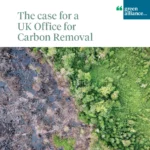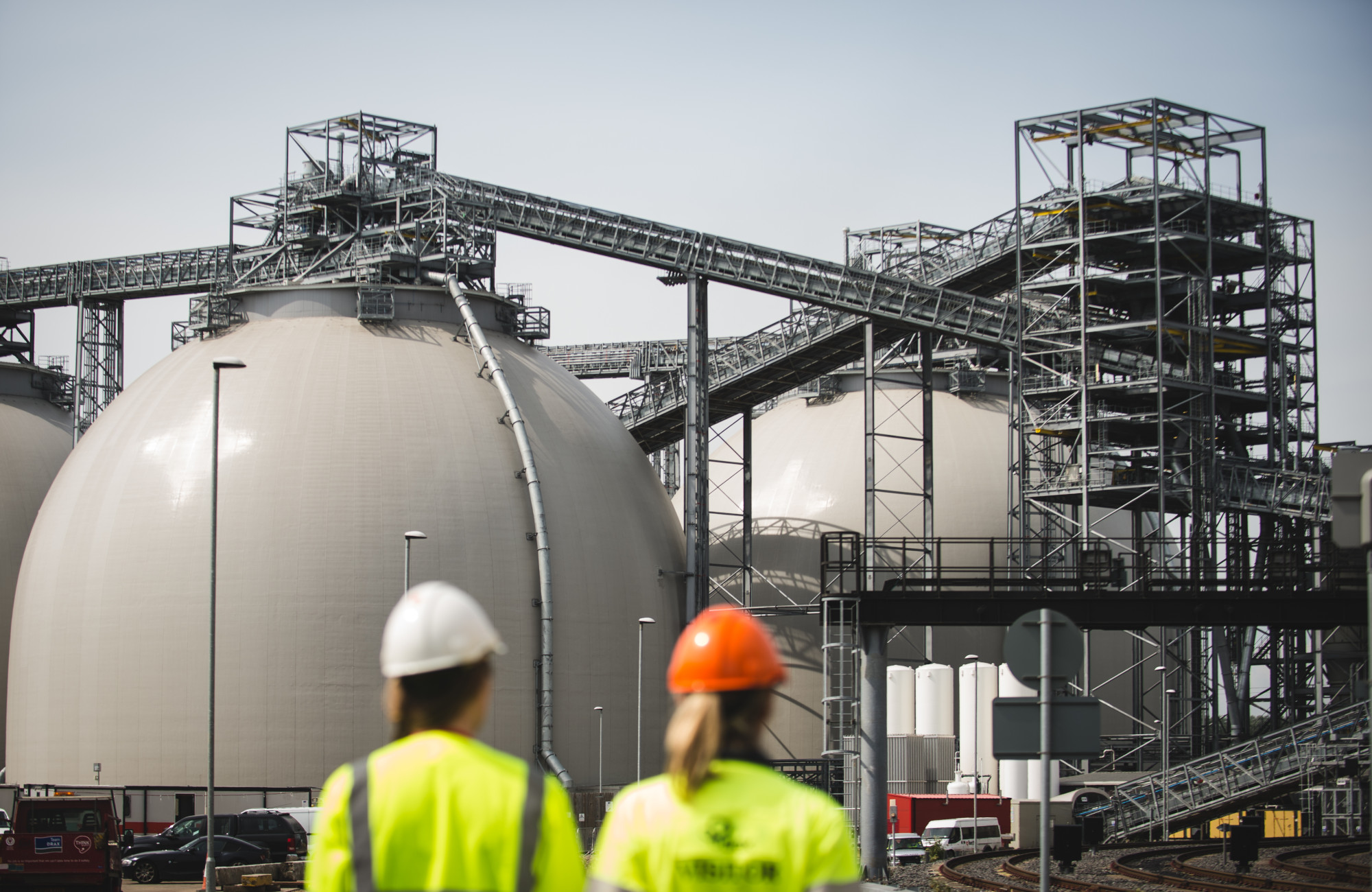The case for a UK Office for Carbon Removal
Green Alliance, 22 June 2023
The use of carbon offsets has grown dramatically in recent years. 96% of FTSE 350 companies increased spending on offset projects and carbon credits between 2020 and 2022, according to a survey by Kana Earth. But these impressive statistics hide a more nuanced picture. Numerous investigations this year have exposed widespread issues with carbon markets. Investor confidence is low, and companies remain confused about how to ensure the credits they buy really help tackle the climate crisis.
Businesses buying carbon offsets today are usually subsidising another organisation to reduce their emissions instead. But a small proportion of the offset market involves funding projects that directly remove greenhouse gases from the atmosphere, and these kinds of offsets are expected to become the norm by the 2030s. Present failures with carbon offsetting foreshadow what could happen to the greenhouse gas removal market if it is left to scale up without proper oversight. The sector direly needs regulation – which is why Green Alliance has proposed that the UK leads the way with an Office for Carbon Removal.
Nature-based removals alone will not get us to net zero
Nature-based carbon removals (such as tree planting and peatland and wetland restoration) are the only greenhouse gas removal methods currently deployed at scale. But there are serious risks associated with relying on these techniques alone. A recent investigation into one of the world’s biggest carbon credit certifiers revealed that almost 90% of its credits were not genuinely reducing carbon emissions. Even where claims are robust, there are concerns about the permanence of nature-based removals. To count as a removal, they need to store carbon over the long term. But with tree planting, for example, factors such as wildfires or disease that are outside of the managers’ control can cause carbon to be re-emitted.
To complicate things further, research indicates that a tonne of carbon sequestered through nature-based offsets rarely equals a tonne of carbon dioxide emitted through burning fossil fuels. This is in part to do with timescales: burning fossil fuels releases carbon dioxide into the atmosphere immediately, while sequestration through nature-based solutions takes more time, putting us at risk of breaching tipping points or temperature targets in the meantime.
Engineered greenhouse gas removals, such as bioenergy with carbon capture and storage (BECCS) and direct air carbon capture and storage (DACCS) do also carry risks. BECCS relies on growing crops or trees to burn, which competes with land for food production and can lead to carbon and nature rich habitats being cleared. In the UK, extensive use of BECCS would mean importing wood or plant matter from overseas, hampering other countries’ progress in cutting carbon and endangering biodiverse habitats, as the BBC’s Panorama documentary about the Drax plant exposed. The very existence of these technologies might even deter businesses from directly reducing their own emissions first.
If the risks are not managed correctly, relying too heavily on greenhouse gas removals rather than reducing emissions could mean the net zero target is missed, even if it looks like it is being met on paper. But failure to scale up the sector will likely mean we significantly overshoot 1.5°C. We are relying on greenhouse gas removals to play a crucial role in offsetting residual emissions from hard to decarbonise sectors like agriculture, aviation, and waste.
Scaling up the industry while minimising its risks is a difficult balancing act that requires planning. An Office for Carbon Removal could both oversee the industry’s governance and ensure it grows sustainably.
A regulator will increase confidence in the industry
Our report details the office’s proposed responsibilities, which include determining and defining what counts as genuine residual emissions, and providing updated information on the sustainability impacts of different technologies. It would actively drive investment into a portfolio of different greenhouse gas removal measures, reducing reliance on cheaper nature-based removals, like tree planting, that the market is currently favouring. The office could also direct government investment into greenhouse gas removal technologies and associated infrastructure (such as pipelines to transport carbon dioxide). At the most basic level, it would ensure any measures used by businesses to make carbon neutral or net zero claims really work.
Greenhouse gas removal measures are limited and the decisions around how best to use them should be made by a dedicated authority, not dictated by short-term market prices. Climate models consistently show that no combination of the technologies currently available would be able to offset more than a tiny fraction of today’s emissions; we cannot afford to waste our offsetting on emissions that could be directly reduced instead. Offsetting should only be used to counter the residual emissions for which there is no viable alternative.
The need for strong governance is even more pressing at global level. The UK aspires to be a world leader in carbon removal, and with access to a huge volume of undersea storage in the North Sea this is plausible. The UK still has international clout in financial market rulemaking, and carbon removal credits are a part of this wider financial market structure. If the UK can build a successful governance model for the industry, it would provide a template for other countries.
This industry must grow if the world is to meet the targets set out in the Paris Agreement. Good governance of the sector now will avoid the pitfalls along the way, and an Office for Carbon Removal is needed to make this happen.
Read the full report from Green Alliance here.
Faustine is a policy assistant at Green Alliance working across their Natural Environment and Greening the Economy themes.
Read more:






